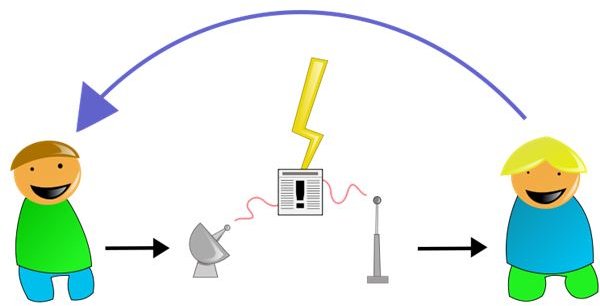Sample Communication Process Model for Clarifying Messages
Effective communication involves sending and receiving information so that all participants in the conversation understand the content conveyed. When the communication process fails to happen adequately, confusion, misunderstandings and more serious conflicts occur. Incomplete information, improper background data and cultural differences all contribute to communication problems. Understanding a sample communication process model can help business professionals improve their capacity for speaking, writing, listening and responding well. Effective communication is important because it enables employees to work productively in a collaborative atmosphere to achieve company goals.
Communication Process Model
There are several stages in the communication process. Here is what is included in a sample communication process model. Communication begins when one person sends a message. For example, he encodes this message as spoken words, written text, electronic text or non-verbal means. The person receiving the message needs to decode and interpret the information at the time he receives it. Then, he responds to the sender with feedback about what he thinks has been communicated. At each point in this process, complications and disruptions can lead to confusion and problems.
Removing Barriers in the Communication Process
All business professionals should recognize that the messages they think they communicate may not necessarily be received in the way intended. To ensure information sent becomes useful to the people receiving it, people need to take extra care to communicate in a format appropriate for the current situation. Additionally, they should understand their audience. Failing to comprehend what the audience expects can result in further confusion. Valuing cultural differences can prevent misunderstandings that lead to work place conflict and diminished productivity.
Choosing the Right Communication Format
During face-to-face meetings, audio and video conferences and telephone calls, people exchange information with spoken words. When an exchange of information helps clarify confusing issues, choose a live meeting. Written communication includes email, documents, notes and formal letters. These formats work for providing complex policies and procedures. The communication process succeeds when participants use the appropriate channel or mechanism. For example, bad news delivered by email typically results in additional anxiety and stress. Busy professionals may overlook the necessity of choosing the best method of delivering the message in their haste to complete tasks in a hectic work place. However, depending on the complexity of the message, paying attention to the way the message gets delivered can be worth the extra time and effort.
Learning to Listen Actively in the Communication Process
Business professionals also need to take responsibility for listening carefully to messages conveyed to them. Paraphrasing, or repeating what was just said to them, can help in ensuring the communication process works smoothly. Avoiding the temptation to jump to conclusions before truly understanding the details can help improve collaboration in the work place. Asking open-ended questions to solicit more information can diffuse a potentially volatile situation.
Understanding Culture’s Impact on the Communication Process
As employees increasingly work with global business partners, they encounter people who do not share their background, interests or cultural values. Being sensitive to cultural differences can help business professionals work more effectively together. For example, keeping your communication free of idioms or jargon can help in communicating with those who do not share the same primary language.
Conclusion
Targeting a particular audience, organizing a message so that it contains accurate, timely and clear content and delivering the message using the most appropriate format ensures that the communication process works effectively. By reviewing how a sample communication process model works, business professionals can take care to speak and write more clearly as well as listen and respond more effectively.
References and Image Credit
- Image Credit:Communication (https://commons.wikimedia.org/wiki/File:Communication_shannon-weaver2.svg)
- Guffey, Mary Ellen. Business Communication: Process and Product. 7 ed. Mason, OH: South-Western College Pub, 2010.
- “Introduction to Communication Skills - Communication Skills Training from MindTools.com.” Mind Tools - Management Training, Leadership Training and Career Training - Right Here, Right Now. https://www.mindtools.com/pages/article/newPPM_82.htm (accessed September 19, 2010).
